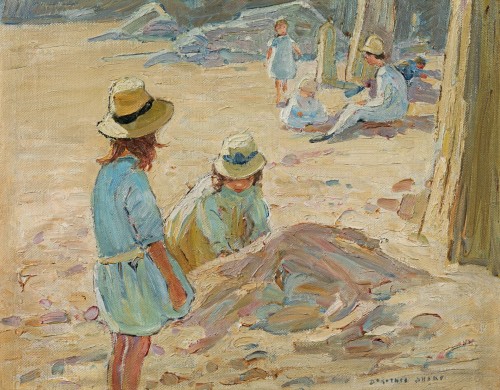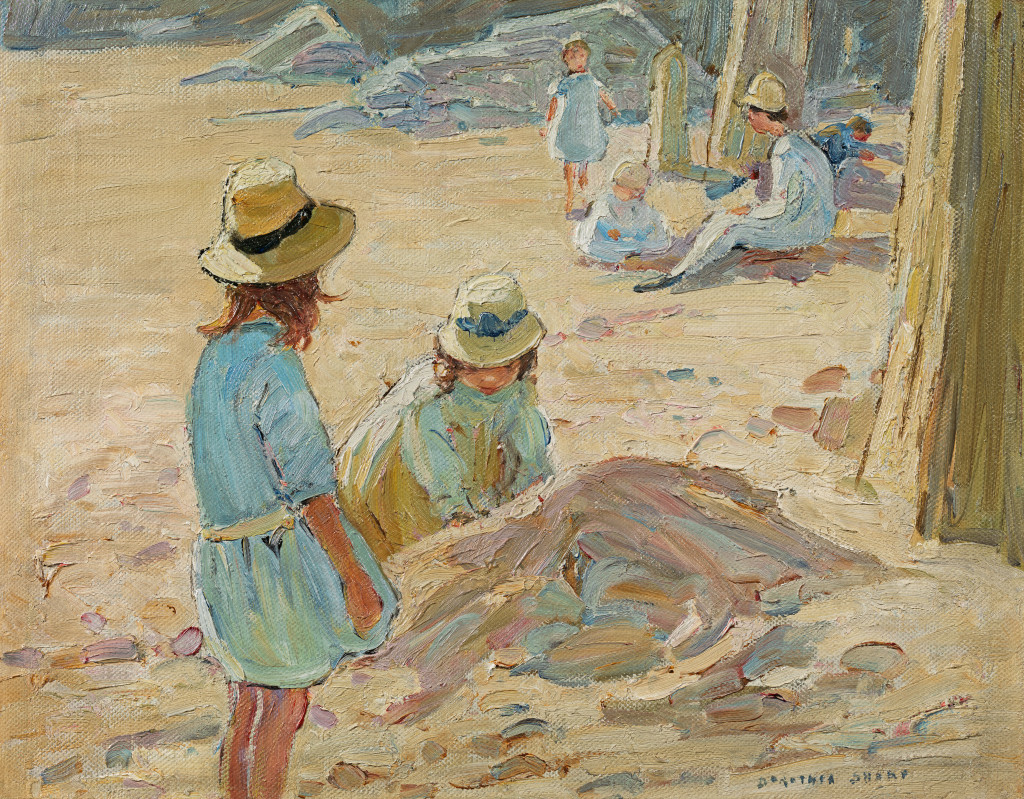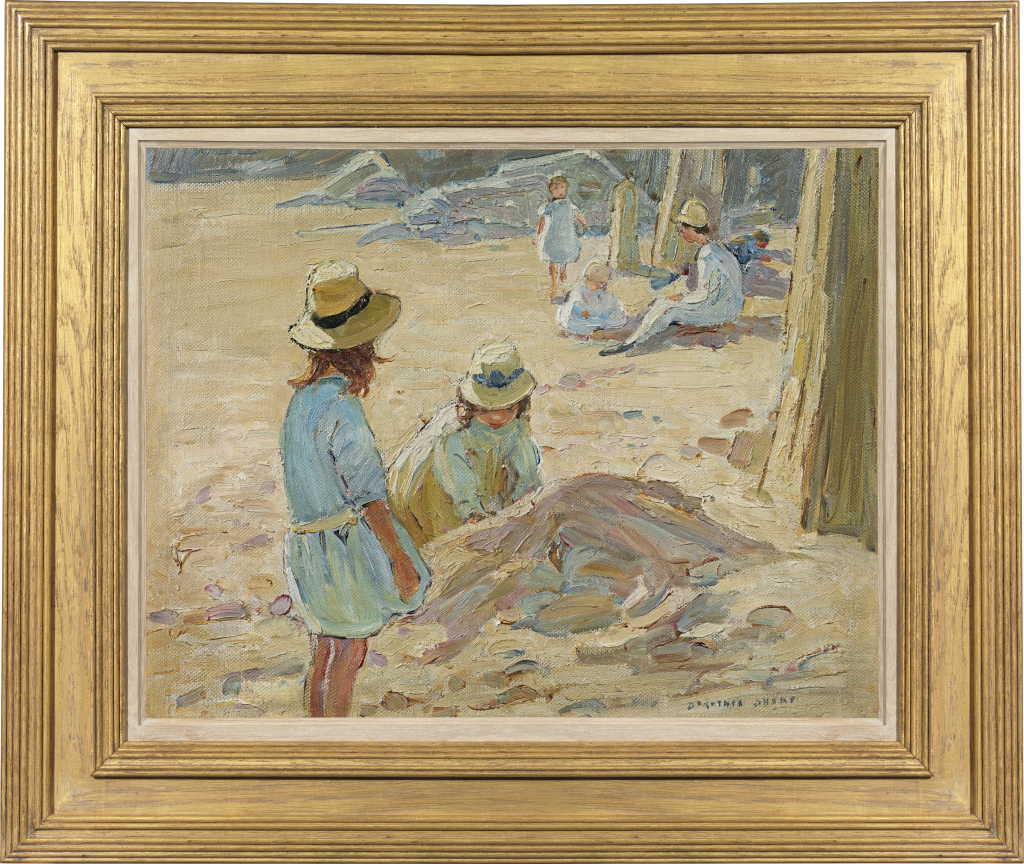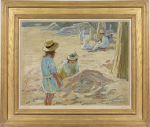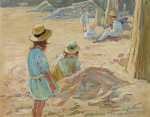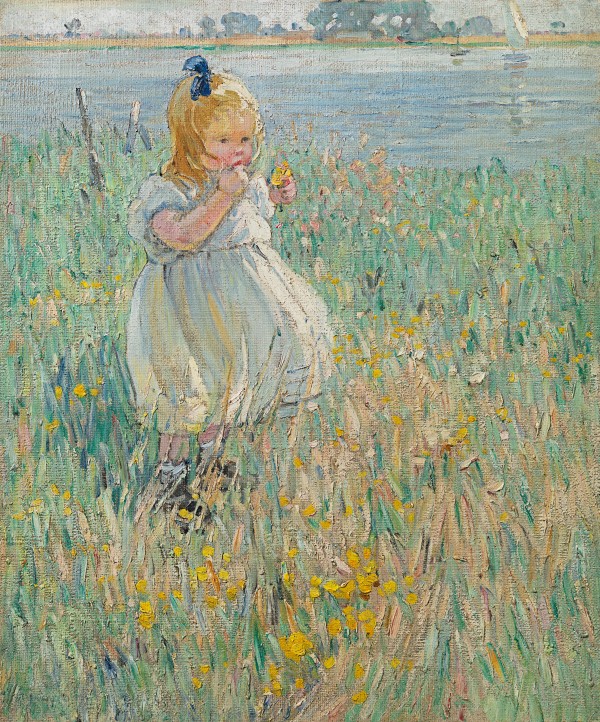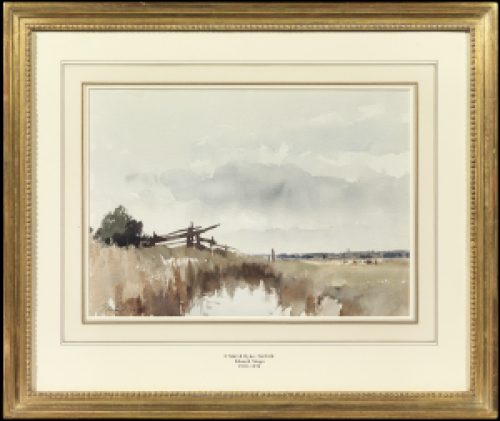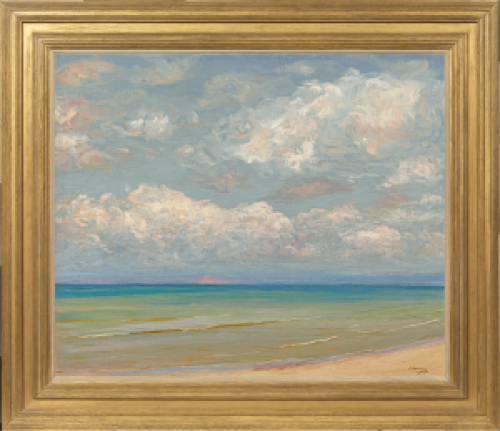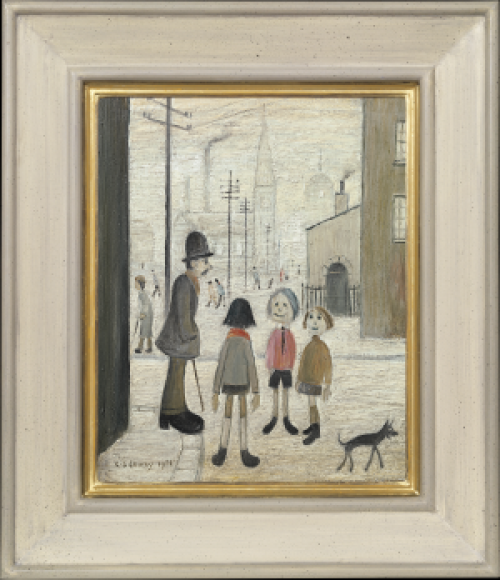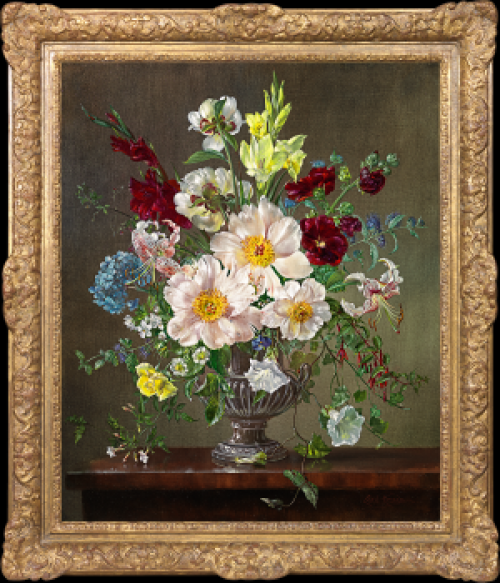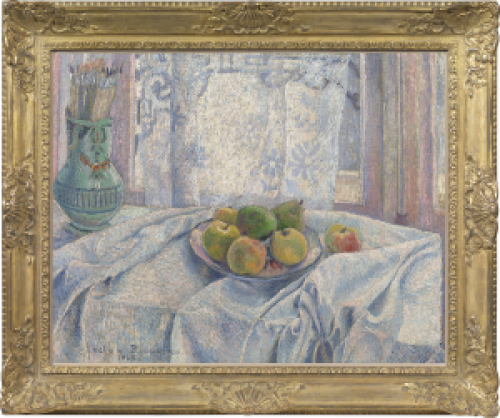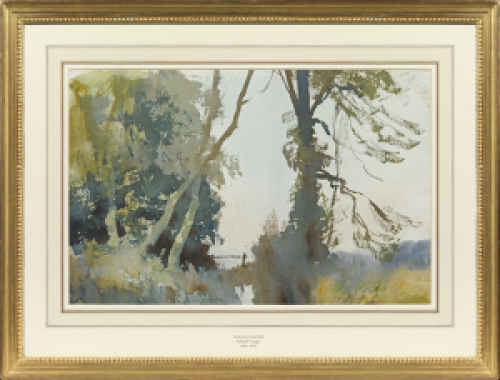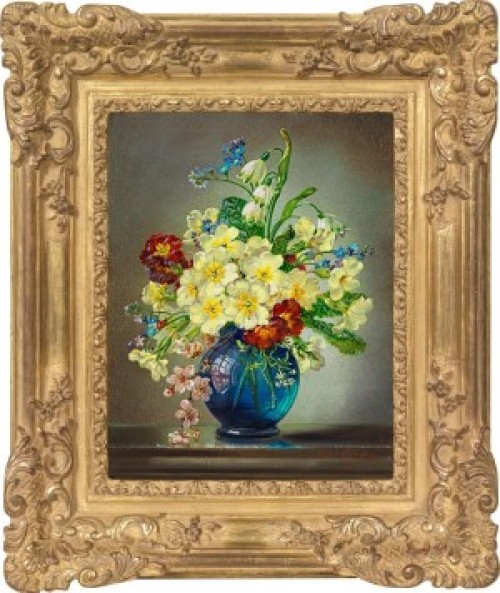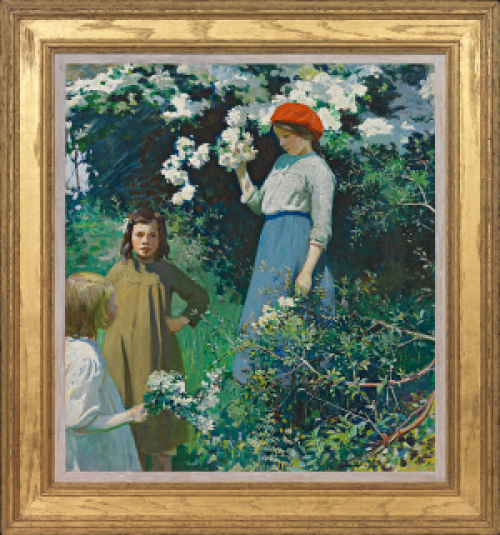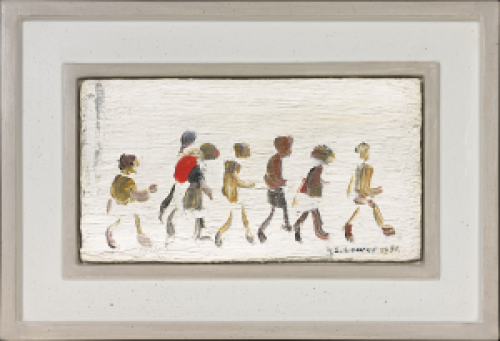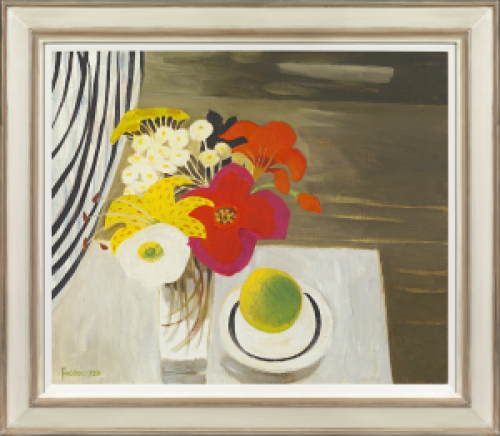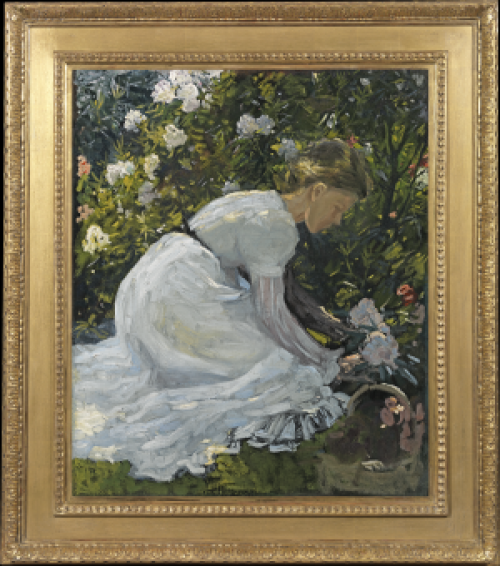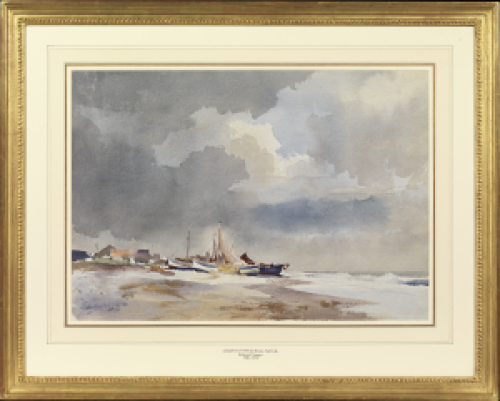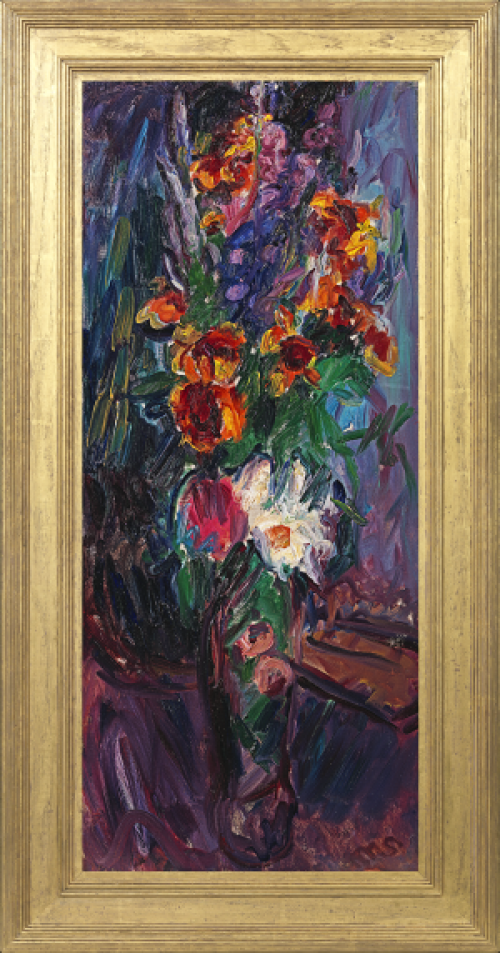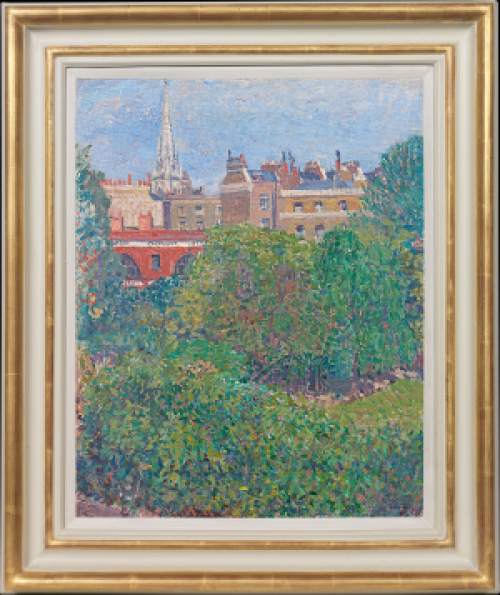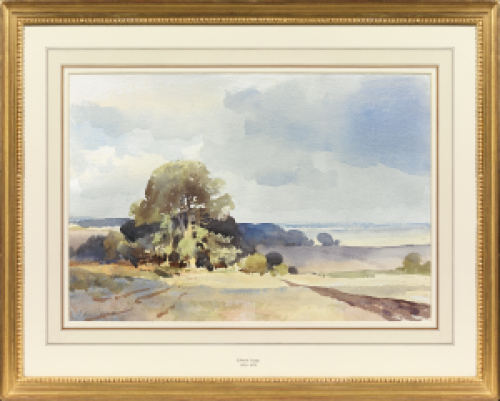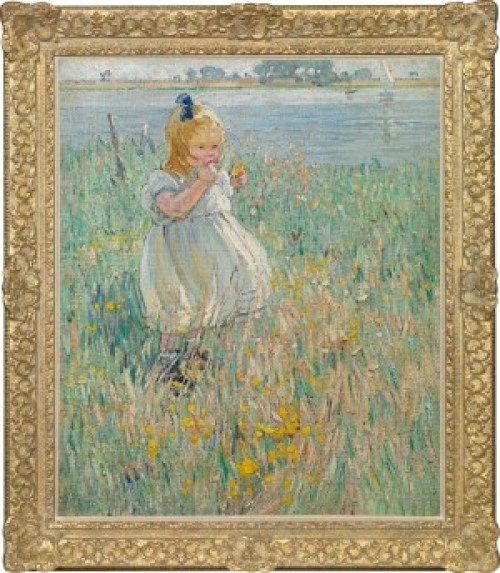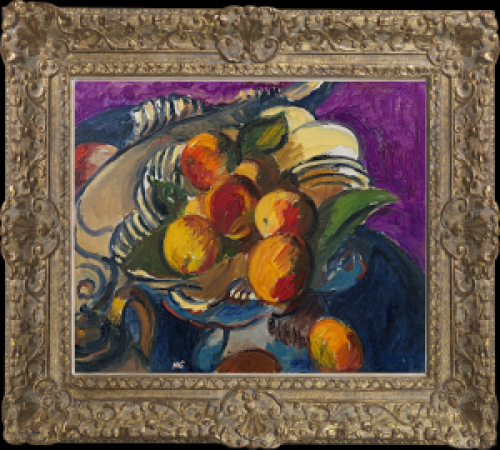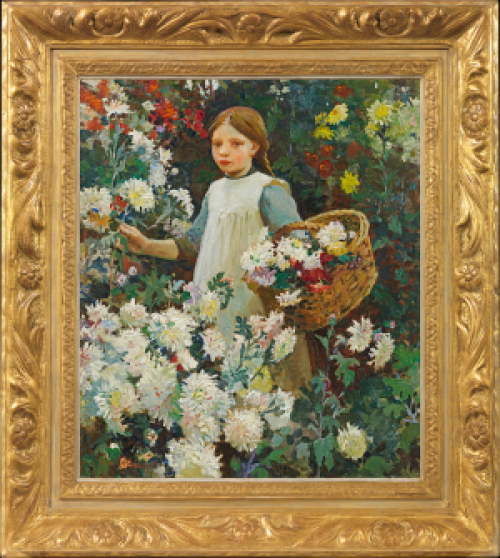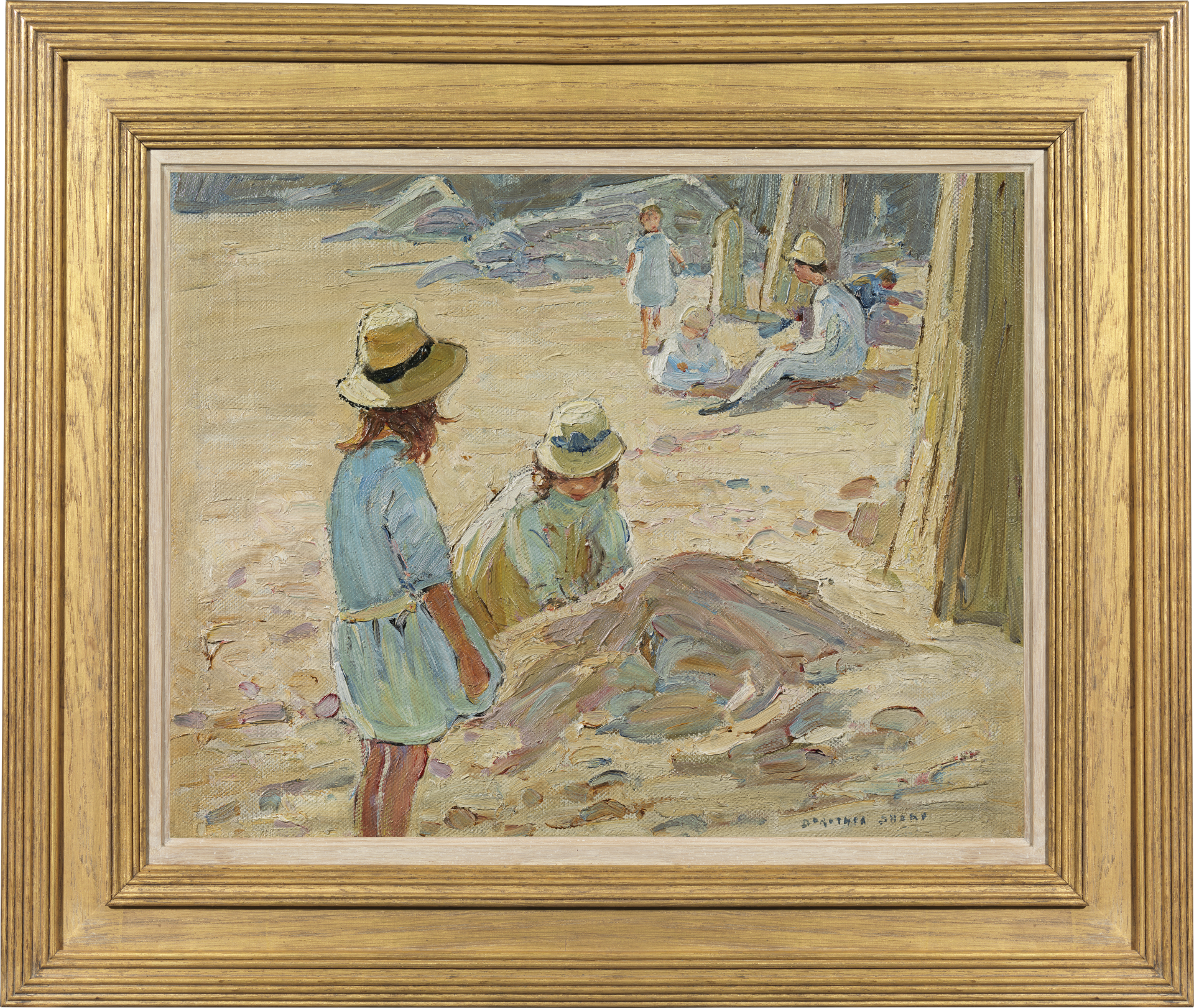DOROTHEA SHARP
Dartford, Kent 1873 - 1955 London
Ref: BX 196
The sand castle
Signed lower right: DOROTHEA SHARP; inscribed on the stretcher: Building Castles 1031/A / 9
Oil on canvas: 14 ¼ x 18 1/8 in / 36.2 x 46 cm
Frame size: 20 ½ x 24 ½ in / 52.1 x 62.2 cm
Painted in the 1920s-30s
Provenance:
The Carroll Gallery, London
Private collection, UK, then by descent
With warm golden sand as far as the eye can see, Dorothea Sharp’s enchanting beach scene, The sand castle, welcomes the viewer into her joyful, idyllic world of childhood companionship and summer holiday nostalgia. Two girls in the foreground surround the growing mound of sand before them, perhaps forming the motte for their castle. One stands with her back to us, possibly glancing at the progress of her mother and siblings beyond, while the other facing forward is more involved with the construction, concentrating on the task at hand. The warmth of the honey-coloured sand is skillfully balanced by the cool lilac/grey rocks at the top of the canvas and mauve shadows mixed with ochre, rose and blue/grey. The neat, white dresses of the children reflect both the fresh, blue shade and the sun-blanched beach, the contrast echoed in ribbons at the waist or adorning their pale, yellow sun hats.
Sharp’s broad, luscious strokes, painted en plein air, reveal her mastery of Impressionism’s bold and vivid brushwork. Having studied and painted in France, Sharp was clearly aware of the work of Claude Monet and the Impressionists and her masterful use of light and shade echoes the techniques of her French counterparts. Her choice of subject matter and tender treatment of the children who appear so often in her work is reminiscent of the work of Berthe Morisot and Mary Cassatt. Sharp did not see the work of the Impressionists for herself until she was studying in Paris during her late-twenties. The experience entirely shifted her early practice. ‘The inspiration of their work was so instant and dramatic that she suddenly switched styles, no longer able to paint in her previous, more conventional way. She recounts in her book that the colours she now used were light French Ultramarine, Yellow Ochre, a very little amount of Vermilion or Rose Madder added to Flake White, in order to create rich shadows which often played the most important part in accentuating the warm, sunlit areas in her paintings.’[1] Sharp’s spontaneous, energetic brushstrokes add to the vitality of the scene, which beautifully conveys long-lost days of adventure and the carefree innocence of youth.
We are grateful to Helen Entwisle for her assistance with the cataloguing of this work.
Dorothea Sharp, The sands, c.1922 Dorothea Sharp, Making sandcastles
Oil on canvas: 61 x 74 cm Oil on canvas: 91.6 x 91.6 cm
Northampton Museums & Art Gallery Queen’s University, Belfast
DOROTHEA SHARP
Dartford, Kent 1873 - 1955 London
The Editor of The Artist praised Dorothea Sharp as ‘one of England’s greatest living woman painters’, and commented upon the particular attraction of her art: ‘No other woman artist gives us such joyful paintings as she. Full of sunshine and luscious colour, her work is always lively harmonious and tremendously exhilarating...the chief attractions of Miss Sharp’s delightful pictures are her happy choice of subjects, and her beautiful colour schemes. Rollicking children bathed in strong sunlight, playing in delightful surroundings, her subjects appeal because they are based on the joy of life. And she presents them equally happily, with a powerful technique which enables her to make the most of her wonderful sense of colour’ (Harold Sawkins, Dorothea Sharp, ROI, RBA, The Artist, April 1935, pp.55-8).
Born at Dartford in Kent, it was not until the age of twenty-one that Sharp seriously took up painting. The death of an uncle, who left her one hundred pounds, enabled her to study at the art school run by C. E. Johnson, RI, in Richmond, Surrey. She then attended the Regent Street Polytechnic where she was greatly encouraged by Sir George Clausen and Sir David Murray, visiting critics to the Polytechnic Sketch Club. It was in Paris that Sharp achieved her complete artistic development. There she studied under Castaluchio, 'from whom she states she learnt all she knows'. It was the work of Claude Monet, however, that was to have a profound and lasting effect on her art, resulting in the highly impressionistic and spontaneous style that she was to adopt for the rest of her life.
Sharp exhibited regularly throughout her career at many institutions including the Royal Academy, the Royal Society of British Artist, the Royal Institute of Oil Painters and the Society of Women Artists of which she acted as President for four years. She held her first one-woman show at the Connell Gallery in 1933, which proved a great success and was constantly attended by admiring visitors. Although primarily a painter of pictures, Sharp also designed posters and covers for magazines, and wrote a series of articles on Oil Painting, which first appeared in The Artist, and were later published by James Connell and Sons.
[1] Helen Entwisle, The Biography of Dorothea Sharp, Rock Pools & Sunshine, York: The Ebor Press, 2008, p.42

